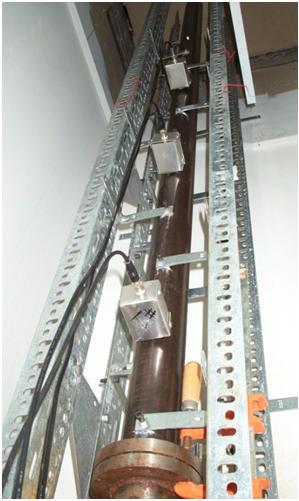Specialized Testing and Accident Reconstruction
We offer specialized testing services that range from bench scale tests to full scale tests. These tests have been used in R&D as well as in accident reconstruction. We have a number of custom built test setups for these purposes that can be either used in-house at BlazeTech or transferred to a client location. Our test capabilities include:
- An instrumented combustion tube to study the ignition and combustion of fine particulates, droplets and gases
- A multi-phase shock tube to examine shock propagation in liquid and multi-phase media
- A reactor to measure chlorine induced neutralization kinetics
- A large scale test facility where large scale combustion tests can be performed
- A nanoparticle laboratory for morphology characterization of fine particulates
- An assortment of combustion systems
- A blow-down chamber
- interactions Between Biological Contaminants and Pipewalls in Drinking Water Distribution Systems
Instrumented Combustion Tube
We have an assortment of various test systems that can be used to measure the kinetics of ignition and combustion, flammability and deflagration overpressures. The effectiveness of fire suppression and other protection systems can also be evaluated in these systems. We complement our in-house capabilities with strategic partnerships with larger organizations, universities and defense labs where large scale tests can be conducted. This strategy enabled us to work with sample sizes ranging from a few milligrams to several kilograms of the flammable material
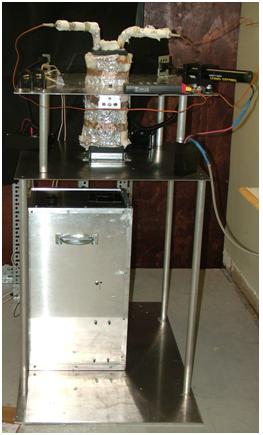
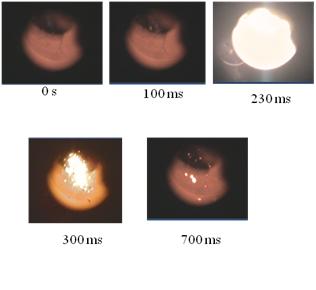
Photograph of instrumented combustion tube. Sequence of photographs from a combustion test on biological particulates. Example: Spore Ignition Tests.
We performed ignition tests on live Bacillus anthracis spores and its biological simulant (Bacillus thuringiensis spores) in a one-of-a-kind instrumented and calibrated combustion tube to measure the kinetics of ignition. A photograph of the combustion tube housed inside a BSL glove box is shown below along with a phase contrast micrograph of the Bt spores prior to introduction into the combustion tube.
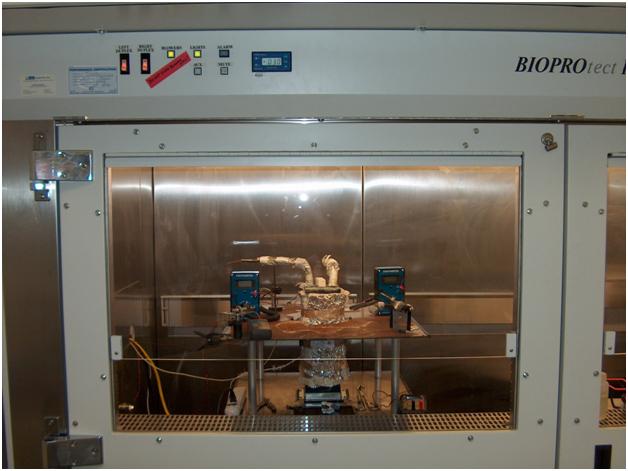
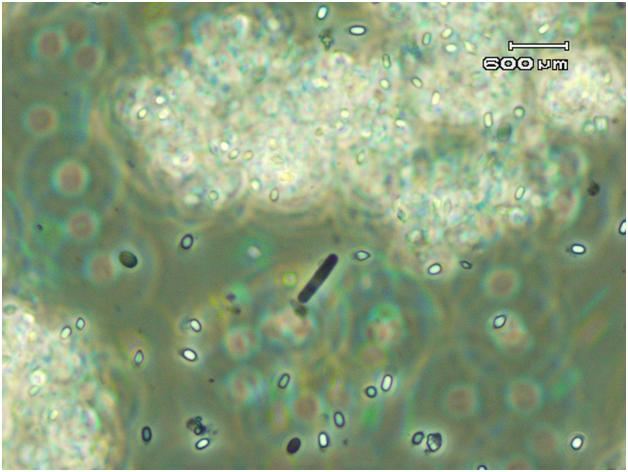
Multi-phase Shock Tube
We have two multi-phase shock tubes that we used to study the shock propagation in bubbly liquids and liquids containing bubbles and solid particles. We used this system to characterize the shock attenuation and shock speed reduction with travel distance.
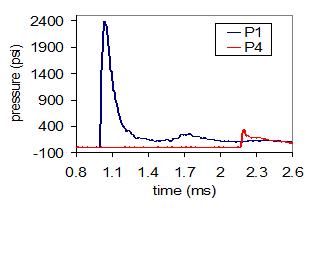
BlazeTech’s instrumented multi-phase shock tube and pressure-time histories measured at two locations in the shock tube filled with bacteria-water slurry.
A Reactor for Chlorine Induced Neutralization Studies
We have a reactor that we can be used to study the neutralization kinetics of bacteria due to heat and oxidizers. A schematic of the test setup is shown below.
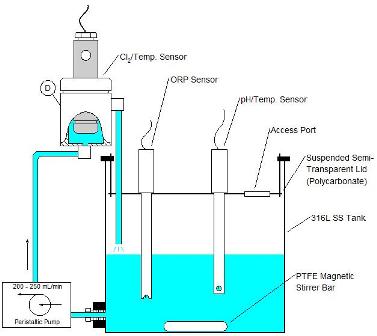
Large Scale Test Facility
We have access to a test facility where large scale combustion tests can be performed on various flammable materials.
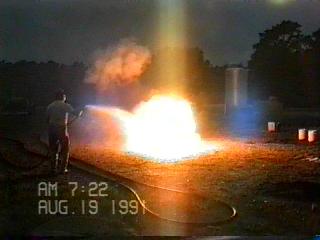
Morphology characterization of fine particulates
We have an assortment of particle sizers for morphological characterization of fine particulates:
- A polarized light scattering instrumentfor size, shape and structure analysis of nanoparticles of various shapes
- A polarized light extinction spectrometer for morphology characterization of neat and coated nanoparticles
- A forward light scattering instrument to measure the size distribution of microparticles
- A sedimentation instrument to measure the size range of microparticles
Interactions Between Biological Contaminants and Pipewalls in Drinking Water Distribution Systems
We performed loop tests at the EPA T&E Facility in Cincinnati, OH to study the interactions of bacterial contaminants and pipe walls and residual disinfectant in bulk water. We examined various types of pipe walls (ductile iron, cement lined ductile iron and cPVC) with and without a biofilm. We developed kinetics models based on the test data.
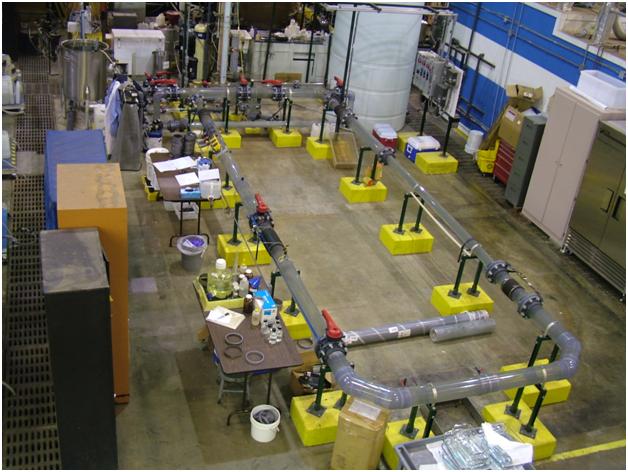
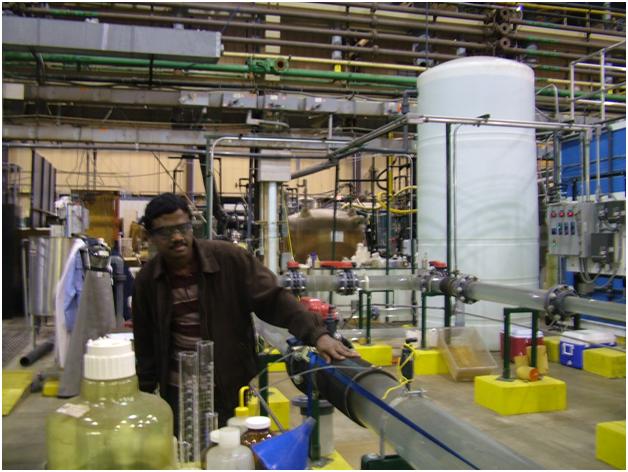
Elemental Analysis
We performed elemental analysis of a biological sample using ASTM D 5373 (for carbon, hydrogen and nitrogen), pyrolysis method (for oxygen), ASTM D4327 (for chlorine), and ASTM D4239-83 (for sulfur) to determine its overall molecular formula.
Thermal Analysis
We performed combined Thermogravimetry- Differential Scanning Calorimetry (DSC) – Mass Spectrometry (MS) measurements on a biological sample both in air and in inert atmospheres to determine the onset temperatures for various processes (such as drying, pyrolysis and combustion reactions), heats of reactions, mass loss due to each reaction and the composition of products from each reaction. We used NETZSCH’s simultaneous thermal analyzer (STA) 449 C Jupiter® for TG-DSC coupled with NETZSCH’s quadrupole mass spectrometer (QMS) 403 AeolosÒ) to perform these measurements.
Combustion Properties of Dust Layers
We used Bureau of Mines R.I. 5624 to determine the minimum ignition temperature of a dust layer and U.N. Test N.1 to examine the ability of a particulate substance to propagate combustion.
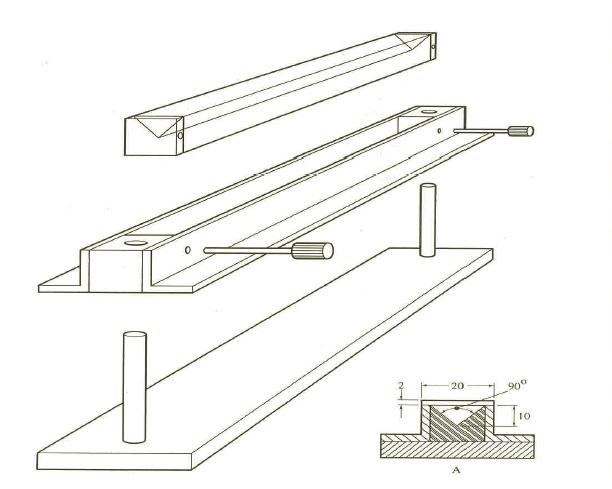
Mould Accessories for U.N. Test N.1
Dynamic Viscosity Measurements for Suspensions
We measured the dynamic viscosity of particle suspensions in water as a function of particle concentration, temperature and shear rate using Brookfield LVDV-III+ Rheometer with a V-73 spindle and developmental extender, in a Brookfield Thermosel. We fitted the test data to a simple engineering model.
Dynamic Surface Tension of Suspensions
We used the Maximum Bubble Pressure tensiometry (MBPT) method to measure the measured the dynamic surface tension of particle suspensions in water as a function of particle concentration, surface age and temperature. We fitted the data to an appropriate model.
Pycnometry to Measure Density of Suspensions
We used Micromeritics AccuPyc 1330 pycnometer to measure the density of particle suspensions in water as a function of particle concentration and temperature. We developed a method to account for the effect of water vapor pressure on the density measurements.
Thermal Diffusivity of Particle Suspensions
We used NETZSCH’s LFA 447 NanoFlash method to measure the thermal diffusivity of particle suspensions in water as a function of particle concentration and temperature.
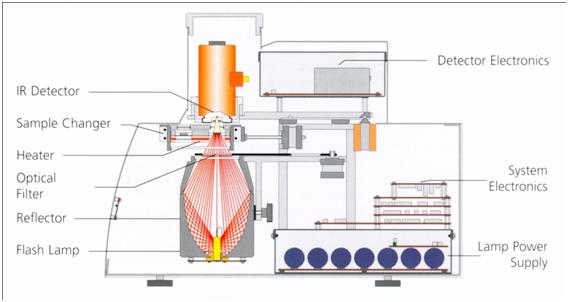
Schematic of NETZSCH’s LFA 447 NanoFlash Instrument used to measure the thermal diffusivity of condensate phase materials.
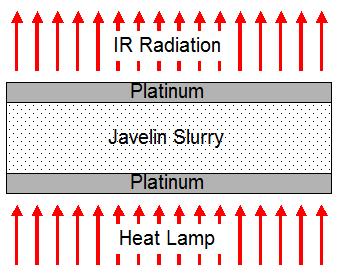
Cross-section of sample carrier used for thermal diffusivity measurements on a Javelin slurry sample.

